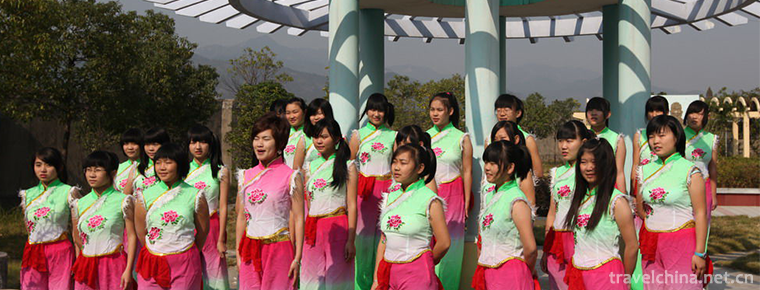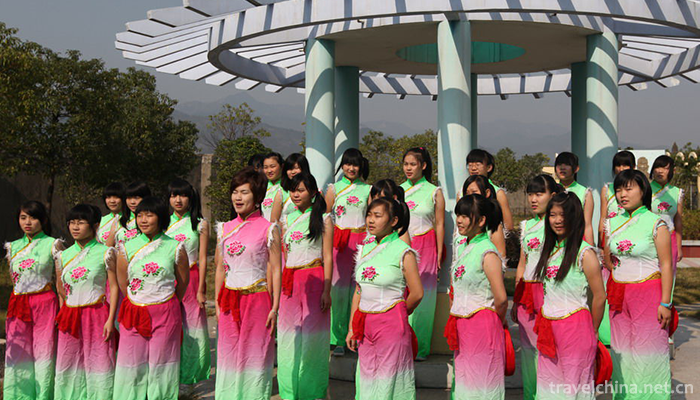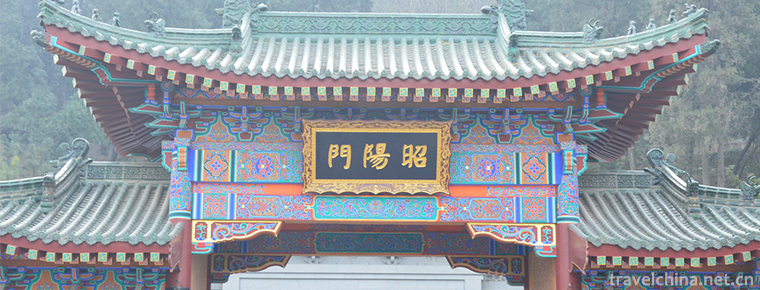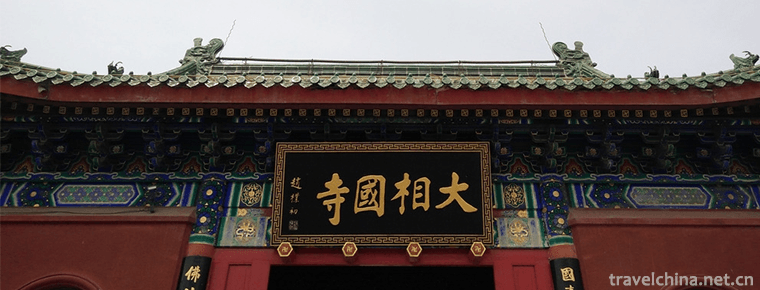2018-12-12

- By ChinaWiki.net
- Chinese Edition
- 2019-06-21
Tongcheng Song
Tongcheng Song is a kind of local folk song originating from Tongcheng, Anhui Province. It is a kind of local folk literature in the form of rhyme created by the local working people collectively. At the same time, it is also a comprehensive art that integrates words, songs and performances.
In 2008, Tongcheng Song declared by Tongcheng City of Anhui Province was listed in the second batch of national intangible cultural heritage list with the approval of the State Council. Art serial number: 566 I-79.
historical origin
The origin of Tongcheng Song dates back to the historical period before Tang Dynasty. By the Ming Dynasty, Tongcheng songs began to be compiled and printed into books. In the collection of Ming Dynasty miscellaneous songs, 25 Tongcheng songs were collected. Feng Menglong, a famous writer of the Ming Dynasty, created a special volume of "Tongcheng Shixing Song", which recorded 24 Tongcheng Songs, and called it "the recitation of local slang". Tongcheng Song, a local folk song originated from the hometown of Tongcheng School in Anhui Province, is a kind of folk literature in the form of rhyme written orally by the local working people collectively, and is also a comprehensive art that integrates words, songs and performances. Tongcheng Song is one of the traditional folk songs. The traditional folk literature in Tongcheng area includes "Whipping Luhua, Peacock Flying Southeast, Tongcheng Song, Six-foot Alley Legend, Huizhou Folk Song, Huizhou couplet plaque" and so on. The folk music category includes "Wuhe Folk Song, Dabie Mountain Folk Song in West Anhui, Shouzhou Gong and drum, Jinzhai Ancient Stele String Gong Drum, Fanchang Folk Song, Tongling Niu Song, Guichi Folk Song, Shitai Song, Jiuhua Mountain Buddhist Music, Qianshan ballroom. "Tongcheng Song is the only special cultural phenomenon in the evolution of folk culture to Cifu," said Xidong Daoke, a famous poet of Cifu.
Inheritance and Protection
Tongcheng Song: Tongcheng Cultural Museum undertakes the historic task of intangible cultural heritage: Although "Six-foot Lane" is a folk story, it is a real thing that happened in Tongcheng in the mid-Qing Dynasty, and it is widely circulated. What's wrong with letting a book come only for the wall? The traditional virtues of tolerance and comity have deeply influenced people's ideological, moral and behavioral norms for hundreds of years, and have positive practical significance in building a harmonious society today. In 1956, Sino-Soviet relations deteriorated. When Mao Zedong met Eugene, the former Soviet ambassador to China, he quoted two poems in the story "Six-foot Lane" in which "The Great Wall is still there today, where was the Qin Shihuang in that year". Ten gongs and drums have taken root in Tongcheng since Ming and Qing Dynasties, and this folk music form of blowing has long been popular with local people and is an important folk activity. In the 1990s, we also put it on the stage. We participated in the opening ceremony of the first and second Huangmei Opera Art Festival in Anqing, China. Its artistic value and performance form were well received by the audience and experts. In the rescue and protection of intangible cultural heritage, Tongcheng Song has been effectively rescued and protected.
First, the urgency of protecting Tongcheng Song. The rescue and protection of Tongcheng Song culture belongs to the protection of national folk culture. In 1992, the Ministry of Culture promulgated and implemented the Measures for the Management of Mass Art Museums and Cultural Museums, which clearly defined the collection, collation and protection of national folk cultural and artistic heritage as the task and important function of cultural museums. The 16th National Congress of the Communist Party of China proposed to "support the protection of important cultural heritage and excellent folk arts".
2. Expanding Tongcheng Song Culture. The rescue and protection of intangible cultural heritage - - Tongcheng Song, a working group composed of experts, inheritors and mass cultural workers, finds out the key objects of Tongcheng Song's cultural heritage to be rescued urgently, chooses Tongcheng Song, a local representative folk literature, as the first batch of provincial intangible cultural heritage declaration priorities, organizes a forum, goes deep into remote villages, visits folk artists and palms. We have a lot of precious historical materials. We will carry out various cultural activities with the theme of "applying for heritage" and organize local folk singers to hold concerts of "Tongcheng Song".
Third, establish a long-term mechanism to rescue the intangible cultural heritage of Tongcheng Song. "Protection first, rescue first, rational utilization, inheritance and development" is the policy that must be adhered to in the protection of Tongcheng Song, a intangible cultural heritage. Select a group of competent and enterprising people to specialize in the collection and collation of intangible cultural heritage; pay attention to the protection of inheritors, make friends with folk artists at the grass-roots level, collect data and establish archives, including the establishment of folk artists, objects and related instruments.
4. Overcoming Impetuous Thought. Video, audio and video, pictures and other forms are used to record and carve CD-ROMs for preservation; research seminars on key cultural heritage projects are set up to publish research monographs; exhibition halls are set up to open up cultural heritage networks to attract public participation; teams of folk cultural heritage are trained; funds for intangible cultural heritage protection are established; and young folk songs are emphasized. Hand; Select the positive traditional folk cultural heritage, such as traditional children's songs, folk stories, folk literature as local textbooks into local textbooks.

Ask a Question
Your email address will not be published.



0 Questions